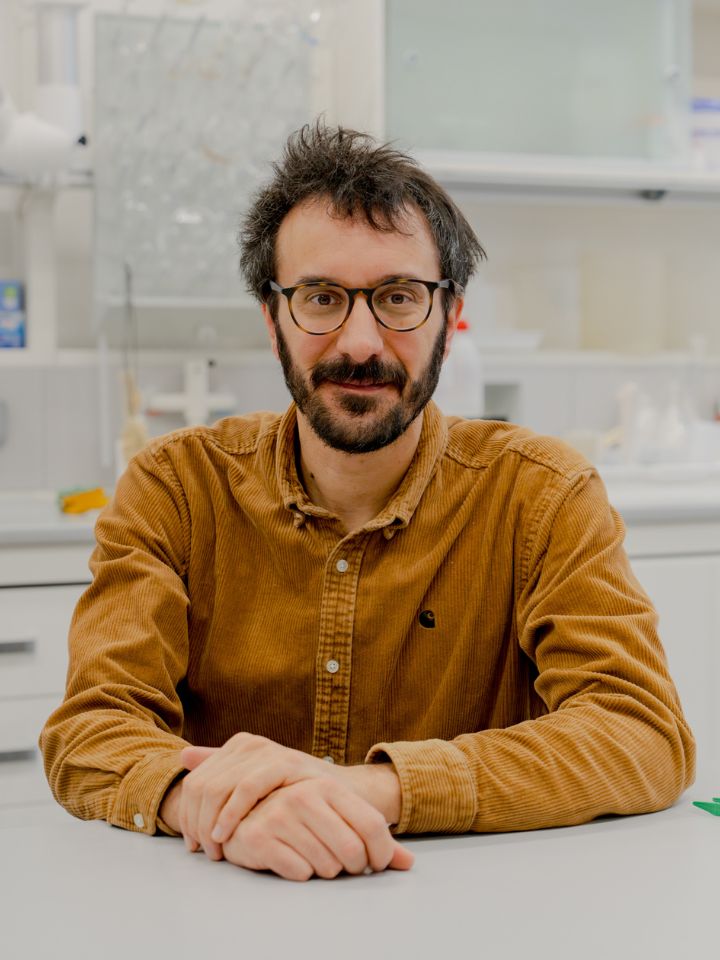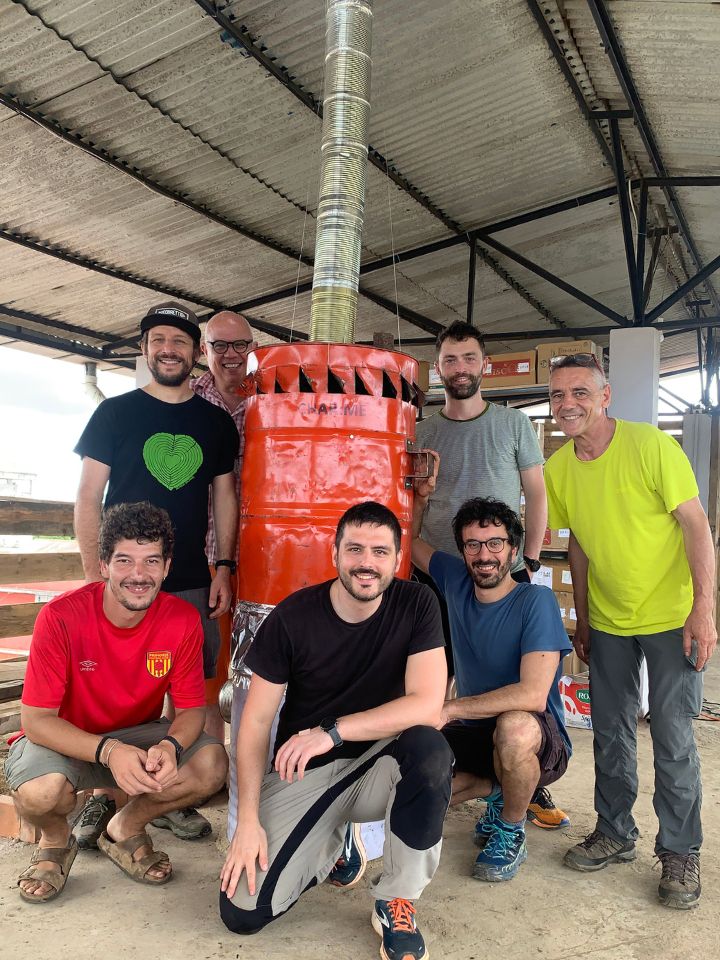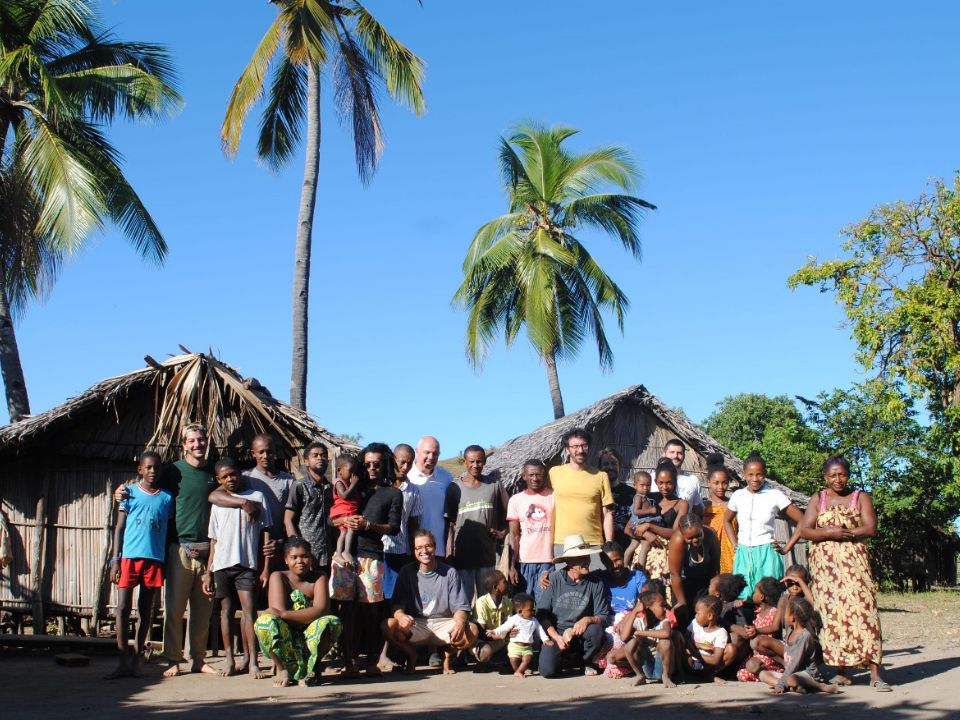
In many developing countries, particularly in Africa, it is common to use primary forest wood, or charcoal obtained from it, as fuel for cooking food in unhealthy and inefficient burners. While on the one hand, wood consumption leads to massive deforestation with significant environmental impacts, on the other hand it represents a health problem linked to the risk of respiratory infections.
The CHAR:ME research project proposes a solution through the design of an alternative supply chain, based on the recovery and transformation of local organic waste into solid fuels capable of replacing conventional fuels. The project is financed with Polisocial Award funds within the 2022 edition (“Local Development and Green Transition”).
We asked Andrea Turolla, associate professor at the Department of Civil and Environmental Engineering (DICA) and scientific coordinator of CHAR:ME, to tell us about this experience.

Professor, let’s start with the context. What should we figure out when we talk about Madagascar?
We must think of a context that is extremely rich from a naturalistic point of view but also full of paradoxes. In fact, it is a country with an enormous natural heritage in terms of biodiversity, one of the richest on the entire planet, but where these resources are put at risk by very harmful practices.
One of these is the use of wood taken from nature for heating and cooking, burning it directly or producing charcoal; hard wood, in many cases valuable or coming from protected plant species.
These practices contribute to the loss of primary forests that give an inestimable value to the island (also as a tourist destination), and generate health problems related to the methods of combustion, often characterized by use in closed environments and without adequate ventilation.
Among other social consequences, there is also the fact that the inhabitants invest a lot of time during the day in the supply of resources, sometimes in conditions that expose the most fragile parts of the population to risks. On the other hand, these practices are deeply rooted in traditional Malagasy culture, an important aspect that must be taken into account.
Is there environmental awareness in Madagascar?
This is a very rural context, where a strong dichotomy is perceived between a deep bond with nature (also strengthened by aspects of a spiritual nature) and a poorly developed awareness of the environment and the consequences of certain habits. On the other hand, it is a situation comparable to many other parts of the world, often located in so-called “developed” contexts, where the challenges are not the same but there is often little awareness of the importance of preserving nature.
In the context of the project as in many other realities, the environmental challenge is still to be played.
What is the soul of CHAR:ME research?
Beyond its social and environmental purpose, the project has two main souls: one connected to the development of the technological solution and the other to its effective diffusion, that is, to the prototyping of the process that will allow this same solution to take root in a context like Madagascar, with all its social, cultural and economic specificities. These are two aspects intimately linked to each other, because the fundamental assumption of CHAR:ME is to introduce technological innovations that, in their implementation, can and want to be adopted by the local population, after having seen their benefits and compatibility with the context.

Let’s start with technology
The principle is simple and translates into two main phases: the production of briquettes and their transformation into coal through a pyrolysis process.
The first is, in essence, the physical compression – through special machinery – of a biomass, which allows it to be transformed into a material compact enough to resemble wood.
The second process is obtained with a specific pyrolytic oven that transforms the biomass briquettes into coal, fixing the carbon in solid matter instead of dispersing it into the atmosphere in the form of CO2, thanks to slow combustion in the presence of limited amount of oxygen. This process, already used for millennia, allows for obtaining coal comparable to that produced from wood (used on a domestic scale) without the use of wood taken from nature, but rather by reusing waste materials that currently have no value.
In our case, we are evaluating the possible reuse of waste from the several sawmills present in the region of Nosy Be, our study area. Other possible waste by-products are linked to local agricultural production, such as vanilla and ylang-ylang.
Besides being more sustainable, is it also a realistic solution?
This is exactly what we are working on: long-term feasibility. While the component connected to the development of the technology itself is the ‘easiest’ part of the project, prototyping it in the local context has put us to the test the most. The challenge lies in finding a solution that is at least as simple, effective and low-cost as the one it wants to replace, as well as capable of triggering positive economic development rooted in the context.
There are certainly more sophisticated, modern and efficient technologies than the one we propose, but they have not taken root once tested in contexts similar to that of our project due to socio-cultural and economic barriers, thus causing the failure of entire projects. This is exactly what we want to avoid. For this reason, the design process was carried out with the support of Kukula Onlus, through a participatory process that involved the population and local stakeholders.

Can people’s behaviors be changed?
The propensity for change is often not the characterizing aspect of human nature, in Africa as in Europe. And yet, yes, it is possible, so much so that behavioral and habit change is the subject of a real discipline (which our consortium Poliedra deals with, among others).
The key lies in the approach to prototyping, which in our case represents a fundamental part of the research, perhaps the most difficult, and represents the real challenge in a development cooperation project like CHAR:ME. It is the phase we are in now, that of the transfer to the field and the “rooting” of the technology in the social and economic context, with the aim of creating a self-sustaining supply chain, starting from the study of the local production and employment framework.
Everything begins by understanding the point of view of the various stakeholders involved. On the one hand, for instance, the success of the project is based on the willingness of local businesses to give their production waste to others, and this means talking directly to producers and assessing their willingness to establish relationships with other operators, giving them material that can be transformed.
On the other hand, perhaps in an even more relevant sense, people need to be open to leaving conventional fuel for innovative fuel, adopting it in their lifestyle habits. These are critical and complex steps, which it will not be up to us to guide.
The conclusion is the same as for many other environmental and social issues: the real challenge social, not technical.
Describe this hypothetical supply chain to us
After a study of the waste material flows, we are now working mainly with local sawmills and distilleries, the former as suppliers of raw material (biomass), the latter as a possible site for the transformation processes, so that they can recover the heat generated during the pyrolytic process for their own (industrial) use. In the future, we imagine that all this can develop into a cooperative model, hoping for forms of self-organization in the area.
We are already taking some first steps; for example, the briquetting machines are built on site by a blacksmith who is working with great interest towards the project. The same goes for the pyrolytic oven, reproduced on site by modifying used oil barrels, which are easy to find there.
In this way, starting from the idea, we are developing a prototype with a participatory process that is tailored to the application context, calibrating the downgrading of the technology so as to make it appropriate and replicable, compatible with the skills and resources available locally.

Your research is interdisciplinary. How did the CHAR:ME team come about?
From chance encounters and long-standing acquaintances that have come in handy.
On the University side, the key people who make up the CHAR:ME team are Matteo Pelucchi, who deals with thermochemical transformation processes (making coal is one of these) at the Department of Chemistry, Materials and Chemical Engineering, Mauro Bracconi of the Department of Energy, who took charge of the energy and development aspects of the pyrolytic reactor, Renato Casagrandi, an expert in sustainability and biodiversity at the Department of Electronics, Information and Bioengineering, and Annalisa Balloi (TTO), who supports the crucial part of promotion and technology transfer to the local context.
And then there is the partnership…
Of course. I would like to underline that we would not have been able to achieve any of the results without this external component.
Kukula Onlus, for instance, was fundamental. This association was created in 2019 by a group of our former students who chose a different way of being environmental engineers, namely by working on development cooperation projects in Madagascar. For us, they have been a fundamental intermediary with local stakeholders and they also made us understand the importance of deconstructing an imaginary still influenced by colonialism in approaching this type of project.
Another very important partner was Blucomb, a small Italian company that develops and produces pyrolytic stoves based on many years of experience in Africa, in projects similar to ours. In addition to the extraordinary availability and expertise of Davide Caregnato, Daniele Della Toffola and Carlo Ferrato, Blucomb was essential for sharing a highly valuable know-how for the creation of pyrolytic stoves suitable for application in the African context.
Finally, last in description but not at all in fact, Demetra Società Cooperativa Sociale Onlus was another important partner due to their skills in life cycle assessment (LCA), which were applied in an excellent manner by Guido Scaccabarozzi to quantitatively estimate the environmental benefits made possible by the technological solution.
What is this team’s key of success?
the ability to make a group of very diverse individuals (but all of great professional and human value) work in a synergic and harmonious way. And for this, a great part of the credit must be given to Andrea Scialabba of Kukula Onlus, tireless and kind conductor of the ‘community’ that has been created around CHAR:ME, from the people already mentioned to many other more or less involved.

What are you learning from CHAR:ME? Will you apply this experience to future projects?
For me and many of my colleagues at the Politecnico, this was the first experience in a development cooperation project. The main lesson we are learning is that working times in developing countries are completely different, and that it is good to get used to slower processes. CHAR:ME is a project with a limited duration and budget, which has shown enormous potential and has opened our eyes to new perspectives. First of all, we would like to draw up guidelines for replicating the technological solution elsewhere and develop the contents in a larger project involving more countries, given that the same problems concern a much broader context than Madagascar. I can say that we are already working on it.
